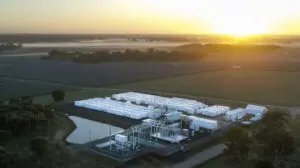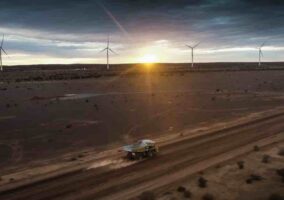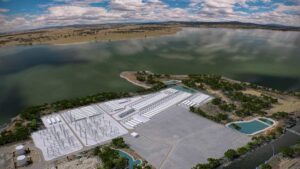Adelaide based PV manufacturer Tindo Solar has unveiled plans to build a solar panel “gigafactory” in Australia and believes it can get this done for just $90-100 million and within two years, with the right federal government support.
Tindo CEO Richard Petterson says the proposed “giga-scale” factory would make up to 1.9 million panels a year and could be in production by mid-2025.
The company – Australia’s first and, to date, only homegrown solar panel manufacturer – says it is mainly looking at potential sites in regional New South Wales and Queensland which are close to ports and has Letters of Intent from potential offtakers.
Petterson says the budget for the ambitious project is based on recent experience, after the company opened an expanded 150MW factory in Adelaide in January, 2023. It is yet to reach full production.
Petterson says 70 per cent of the cost of a solar panel factory is in construction and land; the trick will be doing a deal on the latter to keep costs in the realm of the initial budget.
“Our business case for the development is based on reasonable estimates. We’ve done some early, informal work with parties that can support that and they support our estimates for the cost of a factory and land and other things,” Petterson told RenewEconomy.
The cost of building large solar panel factories outside China varies wildly, depending on the cost of land, the technology, regulatory requirements, and construction costs.
Carbon is planning to invest about €430 million per GW to build its first plant in the south of France, near Marseille, and Enel’s investment in an Oklahoma factory works out at about $US333 million per GW of panels produced annually.
Government support will be critical
Tindo is relying on government support to make the project reality.
It is eyeing the $15 billion National Reconstruction Fund, which the federal government wants to use to develop more manufacturing capacity in the renewable energy sector, ARENA funding, and state initiatives.
“[A revived solar panel manufacturing industry] definitely needs government support to be sensible,” Petterson says.
“It’s such a tight market. We’re responding to the government’s call to establish an industry in Australia but we’re starting from a very low base.
“The main thing is the government policy around how it’s going to support industry both from the NRF point of view and a response to the IRA. That’s the key issue at the moment and it’s time critical as the global market is getting on with it really quickly.”
The US’ Inflation Reduction Act (IRA) created a production credit to incentivise renewable energy technology manufacturing, and Petterson is quietly urging Australia to do something similar.
The IRA and similar efforts in the EU, Japan and other countries, as well as China’s multi-decade support for its own industry, means companies like Tindo want price support for the end product to encourage investors to support the initial idea.
State and regional governments are prepared to do quick deals on land for clean energy projects.
Quinbrook secured a 200 hectare parcel near Townsville last year for its $8 billion polysilicon factory and CleanCo is open to ideas for its former coal power plant site Swanbank in Brisbane.
No IRA response yet but money still coming
Even though Australia is yet to come up with a response to the 2022 IRA, money is moving from government coffers to renewables projects, including building a solar supply chain.
In November ARENA gave SunDrive $11 million to take its low cost solar panel from prototype to a 100MW commercial plant, as part of a $33.5 million capital raise. The company did not say how much it expected the scaled-up plant to cost.
Federal cash, again via ARENA, last year went towards funding a $1.2 million Silicon to Solar study to figure out how to rebuild a domestic solar industry. The final report is due in April.
Australia had a solar industry in the 2000s but it was killed off by manufacturers in China which were able to produce more panels, more cheaply.
Tindo is the last remaining solar panel producer in Australia with operations stretching back to 2011.
It outlasted BP Solar and the buyer of its Olympic Park site in Sydney, Silex Systems, which went out of business in 2009 and 2012 respectively.
When Silex Systems left the industry in 2012, CEO Michael Goldsworthy blamed the “triple whammy” of cheap Chinese modules flooding the market, the high Australian dollar, and inadequate government support.
China supplied 80 per cent of all components globally in 2021.
That is one of the main factors driving federal support for a domestic industry.
In July, federal energy minister Chris Bowen said Australia relies too heavily on overseas supply chains concentrated in one location, and reiterated the long-held idea that Australia has the right pieces to make panels at home, they simply need to be fitted together.
The Silicon to Solar study is being driven by the Australian PV Institute (APVI), which suggested in a 2022 preview the country has the building blocks for a solar industry – local battery, PV module and system controller manufacturing facilities, as well as pilot PV recycling facilities – but inferred that governments must step in with financial and regulatory support.
Tindo estimates that a 1GW factory is the scale needed to kick start a domestic upstream supply chain for solar panels.
The company is in talks with local manufacturers and Petterson says aluminium is likely to be an easy material to source locally, and parts such as junction boxes could be reshored from India, but sourcing glass would be more difficult as there is only one producer of this in Australia today.










